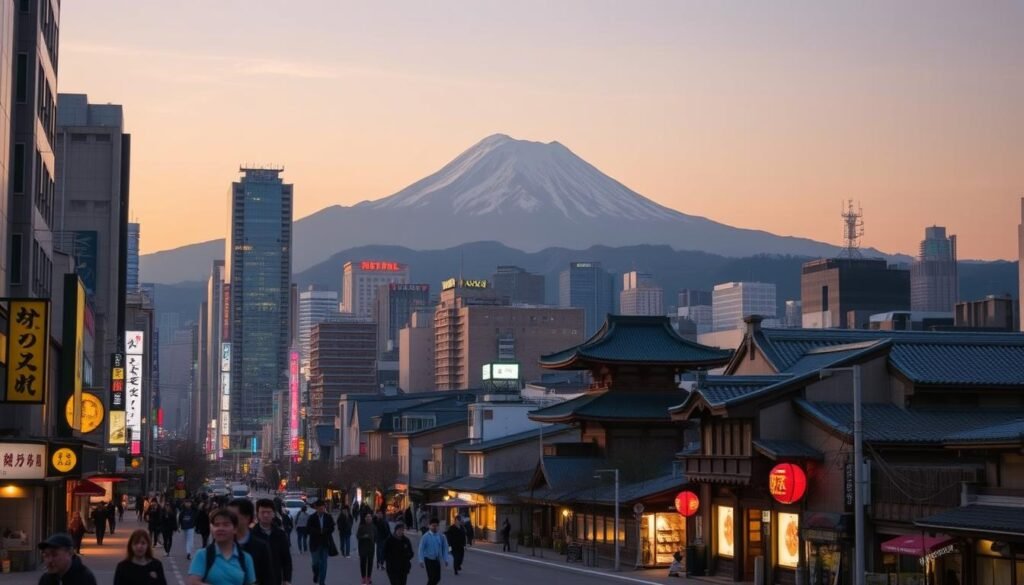Did you know that millions ride the shinkansen each year, linking neon skylines and quiet shrines in hours rather than days?
I wrote this guide as a practical list that pares iconic hubs with calm add-ons so your trip feels manageable and full. I’ll show how Tokyo, Kyoto, and Hiroshima fit into efficient routes and where to slip in quieter spots like Nikko or Naoshima.
Each short section works like an easy itinerary card: time tips, neighborhoods I love, transit notes, and seasonal cues—cherry blossoms or winter festivals—so you can match plans to dates.
Transit ideas focus on shinkansen links and smart day trips that save time. I keep food and culture suggestions simple so you can slow down for tea, street food, or a local sake bar.
Key Takeaways
- This guide pairs major hubs with quieter destinations for balance.
- Short, itinerary-style sections make planning and skimming easy.
- Seasonal notes help you avoid crowds and catch festivals.
- Shinkansen and day-trip tips speed travel between spots.
- Practical neighborhood and food pointers help you feel local fast.
How I Choose the Best Japanese Cities for a First or Second Trip
When I plan a trip for someone traveling for the first time, I aim for a clear mix of headline hubs and low-key towns. This way keeps the pace lively without making visitors feel rushed.
I pick places that pair easy navigation with memorable experiences. Good rail links and direct buses cut transit time, so you can move between destinations without losing a day.
Balancing icons with hidden gems
I favor a blend: Tokyo, Kyoto, Osaka, and Hiroshima for the wow moments, then Nikko, Kanazawa, Naoshima, and Niigata for calm contrast. These picks let you taste regional food, art, and history across the country.
Timing your visit around cherry blossom, fall colors, or winter
Season shapes the plan. Sakura peaks late March–early April; fall color hits in October–November; winter brings Sapporo snow festivals. If you want a unique experience, match dates to the natural show.
- I balance high-energy stops with quieter ones so a trip feels like more than a checklist.
- I look for neighborhoods that cluster highlights so you see more with less transit.
- Above all, I choose destinations that offer moments you can’t find elsewhere in the world.
This short guide aims to help you plan a smart route that makes the most of every visit.
Tokyo: Neon Energy, Timeless Shrines, and Endless Food Adventures
![]()
Tokyo folds countless moods into one sweeping urban rhythm—I chase them all.
I map days by neighborhood: Shinjuku for trains and night views, Shibuya for the crossing and Shibuya Sky, Harajuku for Takeshita Street, Ginza for high-end shops, and Akihabara for arcades.
Must-do spots include teamLab Planets (followed by Uzu vegan ramen nearby), an early sumo stable visit, and an evening on Shinjuku’s Memory Lane for tiny counter restaurants.
“Hit big attractions early or late, and use weekdays when you can to beat crowds.”
I time Shibuya Sky for golden hour so sunset melts into neon. DisneySea deserves a full day for unique rides and staged magic.
| Neighborhood | Highlight | Best hours |
|---|---|---|
| Shinjuku | Memory Lane, transport hub | Evening |
| Shibuya | Crossing, Sky observatory | Late afternoon–night |
| Harajuku | Takeshita Street, youth fashion | Morning–afternoon |
| Ginza | Luxury shopping | Afternoon |
- I base near Shinjuku Station for fast links and day trips to Nikko or Hakone.
- During sakura, I swap indoor time for hanami at the Imperial Palace and Ueno Park.
Kyoto: Temples, Tea, and Tradition in the Former Capital
Kyoto unfolds like a living museum, where narrow lanes and temple roofs hold centuries of quiet stories. This city was Japan’s capital for over a thousand years, and its layers of history shape how I plan my days.
I aim for slow mornings at major sites and gentle afternoons in market streets. I set alarms for sunrise at Fushimi Inari and Arashiyama’s bamboo grove so I can walk under gates and stalks before the crowds arrive.
- Unmissable spots: Fushimi Inari’s torii, Arashiyama bamboo grove, and Gion’s wooden lanes with geiko and maiko at dusk.
- Food & ritual: Nishiki Market snacks, Tenryu-ji shojin ryori, and a formal tea ceremony like Tea Ceremony Ju-An.
- Stay: Book a ryokan near Nanzen-ji or quiet Gion for a garden view and kaiseki dinner; it feels like home for a few nighttime hours.
Timing matters: cherry blossom season hits late March–early April, while fall color peaks mid-late November. I give Kyoto three to five nights so I can repeat favorite places at off-hours and take a calm day trip if time allows.
“Carve out quiet moments — a tea bowl, a moss garden, a pounded path — and Kyoto’s rhythm will open up.”
Hiroshima & Miyajima: Reflection, Resilience, and a Floating Torii
![]()
Hiroshima holds a quiet strength that asks you to slow down and listen. This destination blends solemn spaces and everyday life along wide rivers that bloom with sakura in spring. I treat it as a place for careful walking and honest observation.
I start at the Peace Memorial Museum so the context of history shapes the rest of my day. The A-Bomb Dome, a UNESCO world heritage landmark, stands across the park and holds a heavy, human story I linger with.
I pause at the Hall of Remembrance to read names and reflect. After that, I let the modern city unfold slowly, watching how people go about their routines with warmth and resilience.
On nearby Miyajima island I aim for early or late hours for Itsukushima Shrine’s torii. I check tide times: high tide gives a floating effect, low tide lets you walk the sands. Friendly deer wander the paths and help me remember to move at island pace.
“Take one or two nights here; the museum and the shrine need quiet time.”
Osaka: Street Food Capital and Nightlife on the Dotonbori
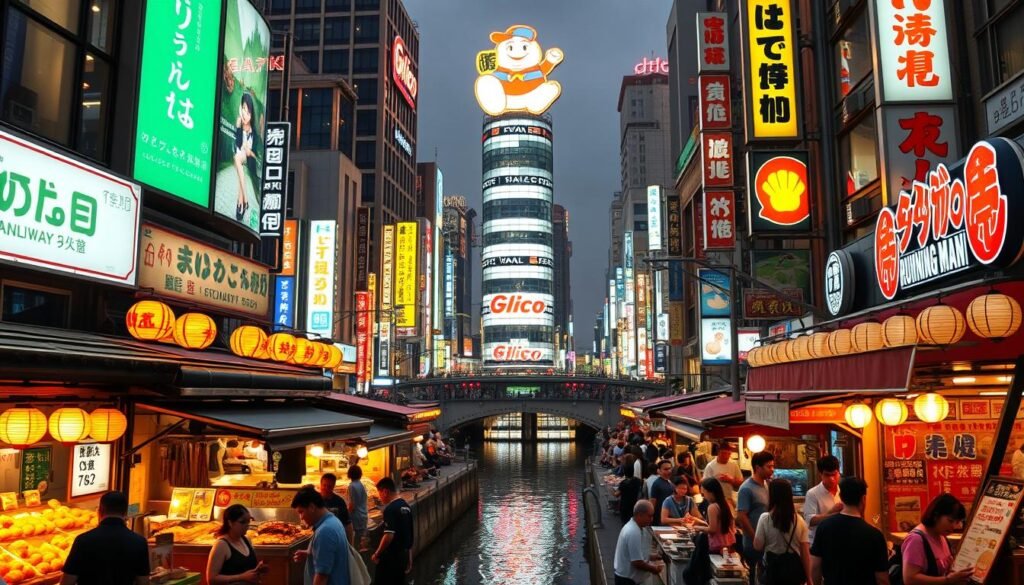
Osaka pulses with a playful energy that turns late-night lanes into a food crawl. I find myself snacking through stall after stall, tasting takoyaki and okonomiyaki as neon reflections ripple on the canal.
For culture, I split my time between the rebuilt Osaka Castle grounds and Shitennoji’s ancient architecture. If a flea market lines the temple grounds, I linger for secondhand finds and local chatter.
The Osaka Museum of Housing and Living and retro neighborhoods give context to daily life across eras. When I want adrenaline, Universal Studios Japan and Harry Potter World fill a day with rides and immersive sets.
- I base myself in Shinsaibashi for walkable eats and quick metro links.
- One night here can brighten a short Kansai trip or match neatly with Kyoto and Nara.
- I budget time for tasting flights—small plates let me sample more spots without slowing the pace.
“Osaka is where food, neon, and friendly chaos meet; plan your evenings around big tastes and late hours.”
| Spot | Why go | Best time |
|---|---|---|
| Osaka Castle | History and park walks | Morning or late afternoon |
| Shitennoji | Ancient temple and flea market | Weekend mornings |
| Dotonbori | Nightlife and street food | Evening |
| Universal Studios Japan | Thrills and themed worlds | Full day |
Sapporo (Hokkaido): Snow Festival Fun and Laid-Back City Vibes
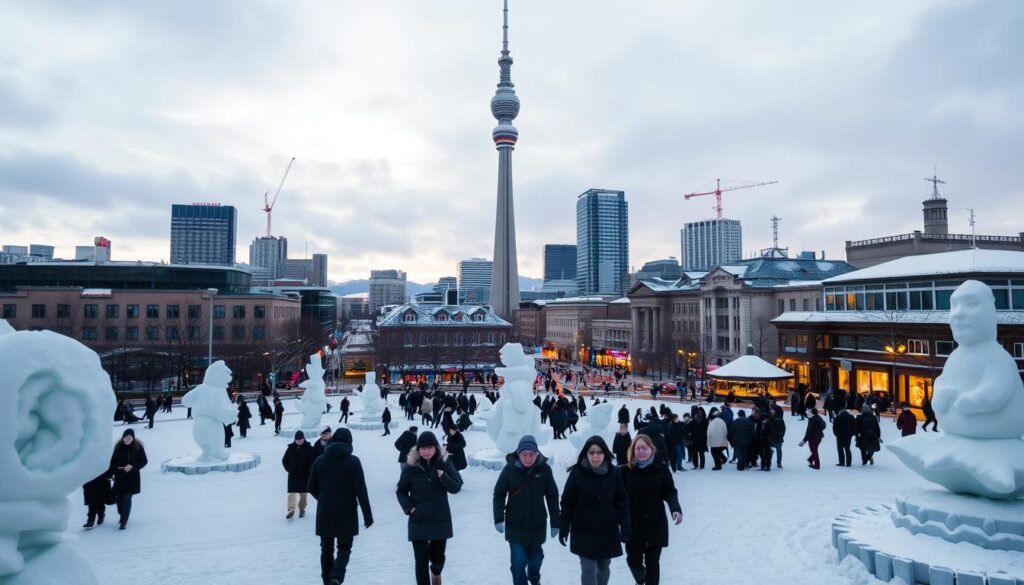
Sapporo’s wide boulevards and slow pace make it a refreshing change from crowded capitals. I built a visit around moments that feel both festive and easy.
Winter wonders: snow sculptures and nearby slopes
Each February, the Snow Festival fills Odori Park with giant ice art that draws a world of photographers and families. I try to time a trip for that run of lights and sculpture.
Even off-season, winter illuminations and crisp air make city walks feel celebratory. Skiers can reach nearby runs quickly, so logistics stay simple compared with distant resorts.
Beer history and viewpoints
I set aside an afternoon for the Sapporo Beer Museum to trace brewing history and sample a local classic. It’s a good cultural pause and a tasty way to learn why the brand feels like home for many locals.
For a clear city view, I ride Mount Moiwa’s cable car at dusk. The grid of streets and snow-lit roofs make a memorable point of perspective.
- When I go: winter for festival energy; summer for milder weather and nature-flavored days.
- Why include Sapporo: easy 90-minute flights from Tokyo and relaxed boulevards that help you unwind on a longer trip.
| Highlight | Why go | Best time |
|---|---|---|
| Odori Park Snow Festival | Elaborate ice sculptures and lights | February (winter) |
| Sapporo Beer Museum | Brewing history and tastings | Afternoon visit |
| Mount Moiwa | Panoramic city viewpoint | Dusk |
| Nearby ski areas | Accessible runs without heavy travel | Winter |
“Sapporo pairs festival sparkle with easy rhythms — a calm hub for seasonal fun.”
Nikko: Lavish Shrines, Forest Trails, and a Bridge to the Past
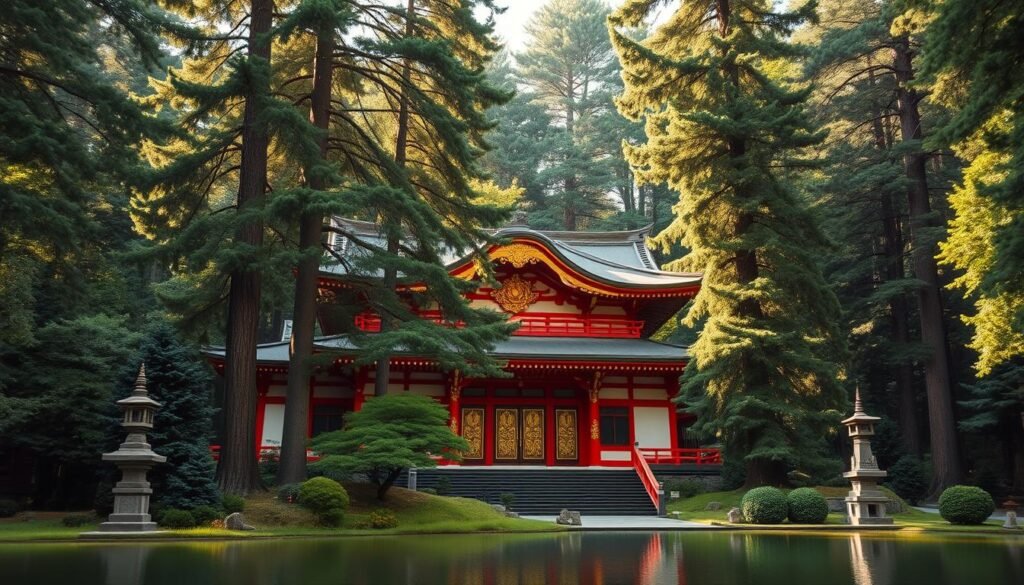
Tucked in the hills north of Tokyo, Nikko blends ornate mausoleums and mossy paths for a calm escape. I found it balances grand architecture with quiet woods, so it works well as a long day or a short overnight stay.
Toshogu early, Shinkyo framing, and a 5 km walk
I arrive before opening at Toshogu Shrine to take in the red-and-gold carvings without tour buses around. Those cedar-lined approaches make every step feel like part of the past.
The red Shinkyo Bridge is a quick photo stop. I frame it from a slight angle so river, bridge, and forest sit in balance for a stronger shot.
Later I lace up for the Takino-o trail, a 5 km route that reads like a gentle pilgrimage. The walk offers forest calm and a small shrine at the end, a neat contrast to the ornate temple complex.
- I keep dango or small snacks handy after shrine climbs.
- If I have limited hours, I focus on Toshogu and the bridge.
- If I have more time, I stay one night to reach mountain lakes, waterfalls, and hot springs.
“Visit Toshogu early; the carvings and gilding are quietest at first light.”
| Spot | Why go | Best hours |
|---|---|---|
| Toshogu Shrine | Tokugawa Ieyasu’s ornate mausoleum amid cedar avenues | Early morning |
| Shinkyo Bridge | Iconic red span framed by river and forest | Midday for photos |
| Takino-o trail | 5 km forest walk to a small shrine; quiet pilgrimage feel | Afternoon |
| Lake Chuzenji | Mountain views and shoreline walks | Late afternoon |
| Kinugawa Onsen | Hot springs for a restful overnight | Evening |
Quick note: Nikko is an easy rail hop from Tokyo, but I prefer staying over when I want a slower experience among the mountains and lakes.
Yokohama: Easy Day Trip with Ramen Museums and Bayfront Views
![]()
Just a short ride from central Tokyo, Yokohama feels like a breezy coastal day that’s easy to slot into a longer trip.
I arrive mid-morning to dodge commuter crowds and stroll Motomachi for café breaks and window shopping.
Motomachi, Yamashita Park, Chinatown, and Cup Noodles Museum
I pair Yamashita Park’s bay breeze with skyline views, then angle into Chinatown for snacks and photo-ready streets.
For ramen fans, Shin-Yokohama Ramen Museum is a long lunch worth planning. It brings regional bowls together, with vegan options on offer.
The Cup Noodles Museum is playful and hands-on; I book a slot to design a custom flavor and pack a unique souvenir.
- During sakura, I hop to Mitsuike-Koen for lakeside paths lined with blossom trees.
- If I travel with kids, I finish the day at Cosmoworld for a Ferris wheel view of the bay.
- With limited time, I focus on Chinatown plus one museum; with a full day, I layer in parks and waterfront walks.
“A quick rail ride makes Yokohama a low-effort add-on to a Tokyo base, especially on nice-weather days.”
| Spot | Why go | Best time |
|---|---|---|
| Motomachi | Souvenirs, cafés, window shopping | Mid-morning |
| Yamashita Park | Bayfront views and relaxed walks | Late morning–afternoon |
| Shin-Yokohama Ramen Museum | Regional ramen styles and vegan choices | Lunch |
| Cup Noodles Museum | Hands-on exhibits and custom cup creation | Afternoon (book ahead) |
| Cosmoworld | Amusement rides and Ferris wheel views | Evening |
Naha (Okinawa): Ryukyu Heritage, City Beaches, and Nightlife
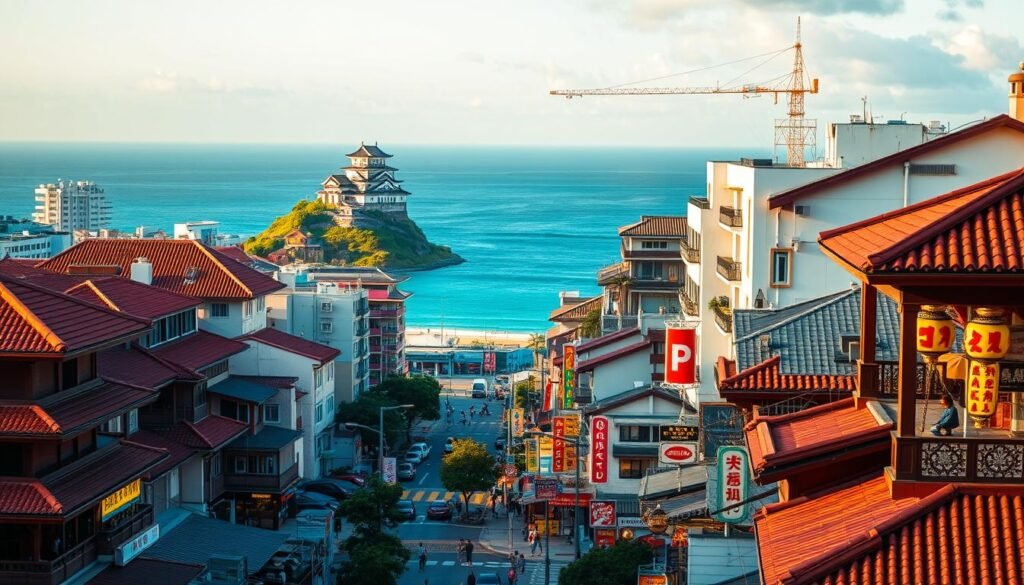
Naha greets you with a blend of ocean air and island history that feels unlike the mainland. I start at Shuri Castle to ground my morning in Ryukyu culture, knowing the restored site tells a long, layered story.
After the castle I wander Kokusai-dori for lively restaurants and late-night bars. I sip awamori at a small bar and pop umi-budo at an izakaya for a true local flavor that feels like home for the palate.
Quick tips and seaside breaks
I balance the city buzz with a short stop at Naminoue Shrine and Naminoue Beach so the sea resets my pace. In summer, I slow down, hydrate, and aim for late afternoons on the sand to catch the light.
- I visit pottery studios between meals and pick small ceramics as keepsakes.
- Naha works well as a capital base if I want to island-hop later that day.
- Even a short day here stacks experience, food, and shoreline for a compact trip japan memory.
| Spot | Why go | Best time |
|---|---|---|
| Shuri Castle | Ryukyu history and rebuilt architecture | Morning |
| Kokusai-dori | Food, bars, nightlife | Evening |
| Naminoue Beach | Quick city-to-sea break | Late afternoon |
“Ryukyu heritage gives Naha a different rhythm than the mainland.”
Nagoya: Castles, Kimonos-in-the-Streets, and Under-the-Radar Eats
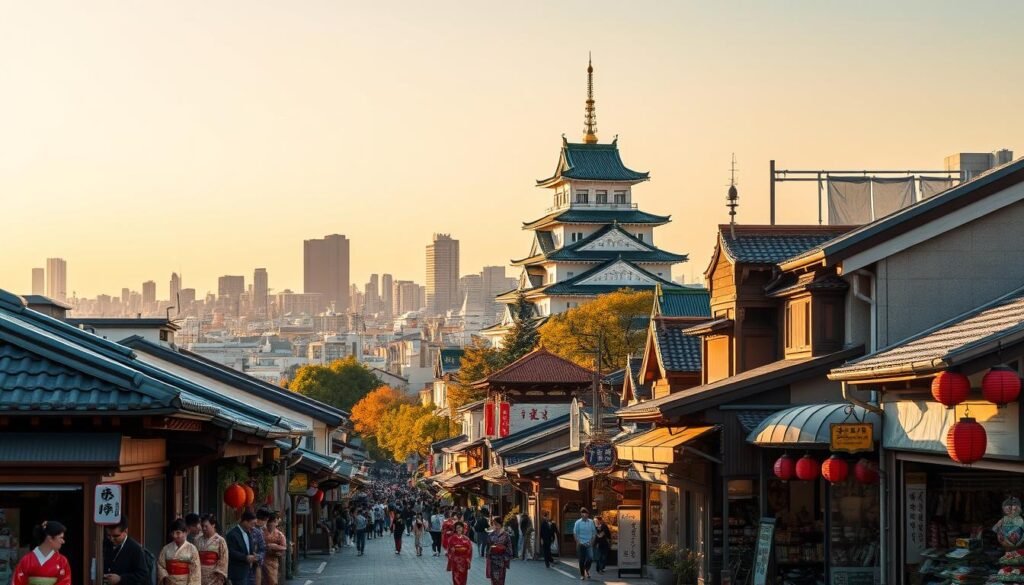
Nagoya feels like a calm, useful hub that quietly bridges major routes and local flavor. I often use it as one easy stop when I want fewer crowds and more time to wander.
I carve out a morning at Nagoya Castle to tour the reconstructed Honmaru Palace. The ornate interiors and garden views show layers of history without overwhelming a single day.
Atsuta Jingu brings cedar-scented calm and spiritual weight. I like the quiet there after the castle’s grandeur; it balances a busy route with a slower pace.
I wander the Osu district for vintage finds and covered-arcade snacks. For regional flavor, miso nikomi udon at Yamamotoya Okute is hearty and surprisingly vegan-friendly.
“If you’re crowd-averse, Nagoya in spring or fall gives blossoms and maples without the crush.”
| Spot | Why go | Best time |
|---|---|---|
| Nagoya Castle (Honmaru Palace) | Reconstructed interiors and gardens | Morning |
| Atsuta Jingu | Important Shinto shrine and quiet walks | Late morning |
| Osu District | Vintage shops, arcades, street food | Afternoon–evening |
| Regional dining | Miso nikomi udon and local cafés | After museum walks |
Niigata: Sake Culture, Sea Breezes, and Artisanal Streets
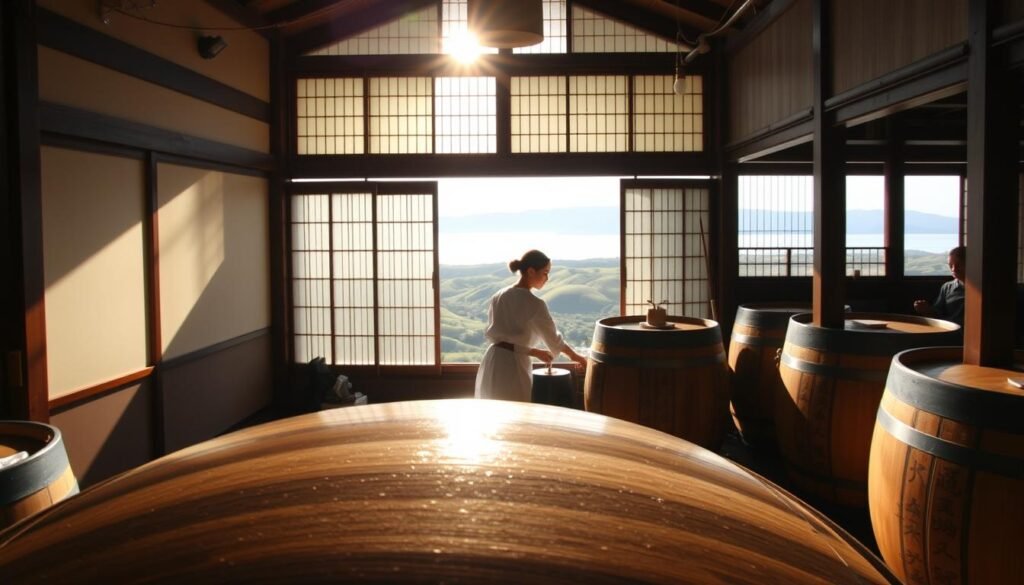
A two-hour shinkansen ride brings me to Niigata, a port city famed for rice, bright seawinds, and thoughtfully made drinks. The place feels like a quieter destination when I need a break from bigger hubs.
I start with a sake foundation at Imayo Tsukasa, where free brewery tours explain production (Japanese tours with English materials are available). Then I hop to Ponshukan inside Niigata Station and trade coins for a tasting wall of regional varieties—fun and compact.
- Tea pause: Saito Villa serves matcha in tatami rooms; it resets my palate between tastings.
- Indie shopping: Nuttari Terrace Street has small cafés and makers—Aotogama ceramics and Tsumugu Coffee are easy wins.
- Quick loop: With a few hours I build a tight route: brewery, Ponshukan, and a café stop before a seaside walk if I have more time.
“Niigata’s lower-key vibe makes it ideal for catching your breath mid-trip.”
I bring a small tote for bottles and ceramics I want to take home. For more background on regional sake and tasting options, see this note on Niigata sake.
Seto Inland Sea Spotlight: Naoshima’s Art Islands and Coastal Calm
A short ferry ride and I was cycling between sculptures with the sea on both sides. This island in the Seto Inland Sea blends contemporary museums with quiet fishing lanes.
I rent a bike and let outdoor pieces guide my route, stopping for views of the shimmering water. The Benesse Art Site anchors the day: Chichu Art Museum and Benesse House feel designed for slow loops and natural light.
Cycling paths make an easy art trail where the journey is as delightful as the exhibits. Ferries connect nearby islands if I want more quiet shores or extra destinations.
I pack light and wear layers; galleries vary in temperature and sea breezes can shift fast. Coming from Okayama keeps travel time short, so a day trip feels both full and relaxed.
Outdoor sculptures, island cycling, and easy links from Okayama
For lunch I choose a simple island café, then finish at the pier for a sunset if the schedule allows. These places mix art, nature, and village life so naturally they feel like home for a day.
“I think of cycling here as a mellow art trail where installations and sea air set the pace.”
- I let outdoor sculptures set my route and pause for coastal views.
- Chichu Art Museum and Benesse House anchor visits, but village lanes often steal the moment.
- Short ferry hops let you add nearby islands when you crave more quiet or art.
best cities to visit in japan for Every Season
Seasonal light and weather steer how I plan days and pick destinations. I choose places that match the mood of the season so visitors get the clearest view of nature and culture.
Spring cherry blossoms: Kyoto, Hiroshima riversides, Yokohama parks
In spring I chase cherry blossom at sunrise and after dark for fewer crowds and lantern-lit magic. Kyoto’s Fushimi Inari and Gion lanes glow with sakura near temples.
Hiroshima’s Ota River banks host hanami along peaceful promenades. Yokohama’s Mitsuike-Koen has 1,600+ trees and makes a great add-on stop.
Summer escapes: Sapporo breezes and Seto Inland Sea islands
Summer sends me north to Sapporo for lighter air and festival energy. For cooler shore days, I cycle Naoshima and nearby islands in the Seto Inland Sea.
Fall color trails: Kyoto temples, Nikko forests, Osaka parks
In fall I stack temple gardens in Kyoto with a day in Nikko’s cedar forests for layered reds and golds. Osaka’s parks offer quick foliage walks between meals.
Winter charm: Sapporo Snow Festival and onsen getaways
Winter belongs to Sapporo’s Snow Festival. I weave in an onsen stay or a short mountain trip for warmth after cold days on the slopes.
“I keep a flexible day plan and a short list of backups so timing, tides, or blooms don’t derail the trip.”
- Plan with bloom and weather forecasts.
- Pivot when local events pop up.
- Always have a nearby onsen or indoor option as backup.
My First-Time Japan Itinerary Building Blocks
I start by anchoring a route around two long stays and layering short hops that match mood and hours.
Tokyo-Kyoto core with flexible side trips
I set three–five nights in Tokyo and three–five nights in Kyoto as the spine of the itinerary for a first trip japan. That gives morning time for big sights and afternoons for neighborhoods and food.
From Tokyo I pick one clear side trip: Nikko for shrines and forest trails, Hakone for Fuji views, or Yokohama for bayfront eats.
When to slot Osaka, Hiroshima/Miyajima, and Nikko
I slide Osaka as an overnight or half-day from Kyoto for neon and street food. If I have 1–2 spare nights, I add Hiroshima with a Miyajima afternoon for tide-timed torii photos.
Early mornings matter: I rise for Fushimi Inari or Toshogu to save hours and avoid crowds. I keep shinkansen legs tight, then short local hops for each destination.
- Modular way: anchor, bolt on, and swap based on interests and daylight.
- Sapporo or Naoshima are seasonal or art-flavored extensions by flight or ferry.
“This modular approach builds an itinerary that flows, adapts, and never feels rushed.”
| Origin | Side trip | Suggested time |
|---|---|---|
| Tokyo | Nikko / Hakone / Yokohama | Half-day–full day |
| Kyoto | Nara / Osaka | Half-day–overnight |
| Between hubs | Hiroshima + Miyajima | 1–2 nights |
Conclusion
What matters most is a strong base, then a few thoughtful detours that match your pace. I built this guide so you can choose anchors and fill days without feeling rushed.
Pick Tokyo or Kyoto as your long stay, then layer quieter destinations and lively cities around them. Contrast neon nights with shrine mornings, and slip an art island or a seaside stop between big hubs.
Fast rail and short flights make point‑to‑point moves easy across the country. One well‑placed rest day resets energy across regions. Early starts and flexible hours are my secret for better light and fewer crowds at each point and city.
Let your interests lead—food, history, art, or nature—and use this guide as a map. With small gaps for chance, every destination earns its moment and you’ll want to visit japan again when time allows.


